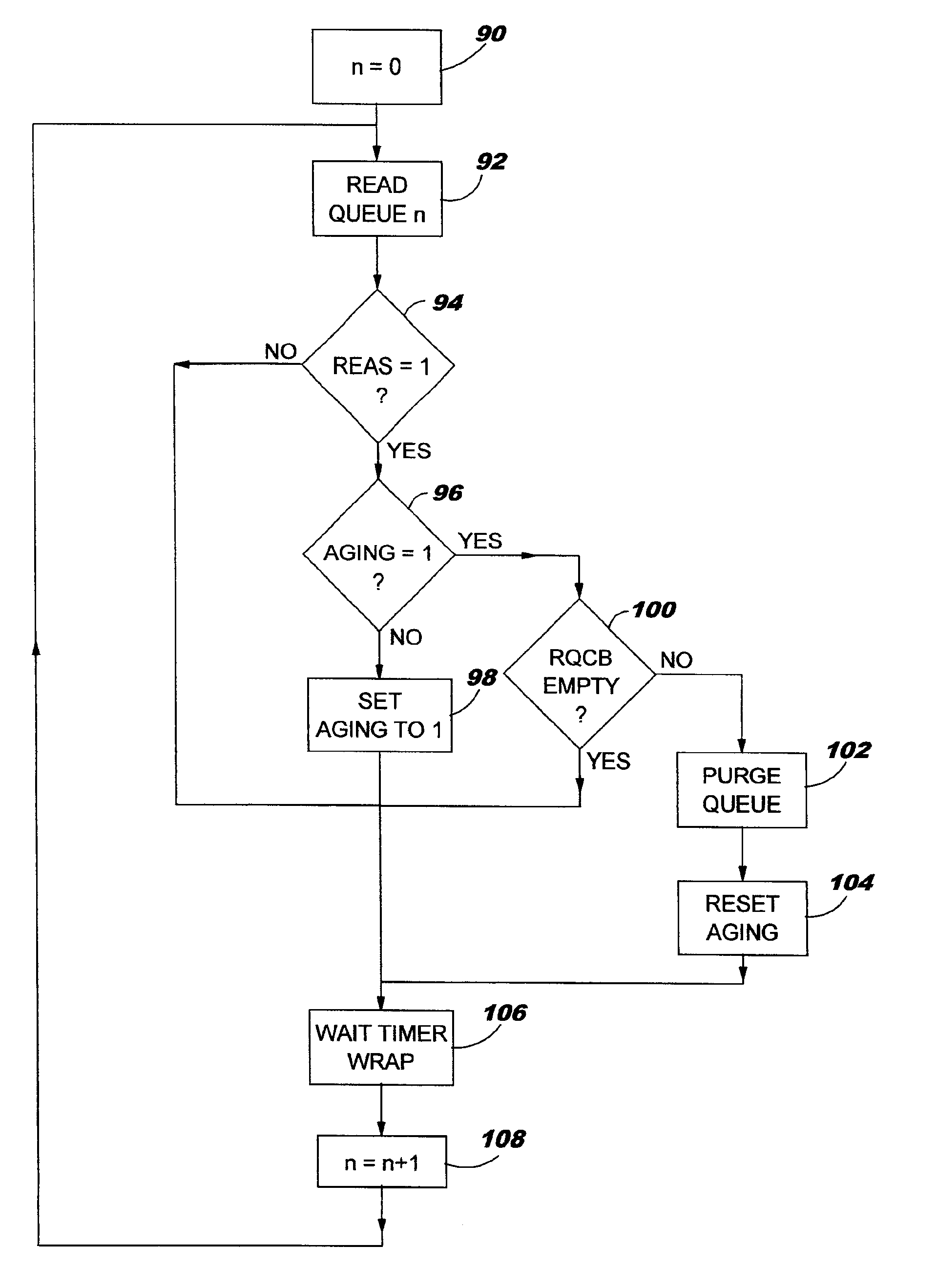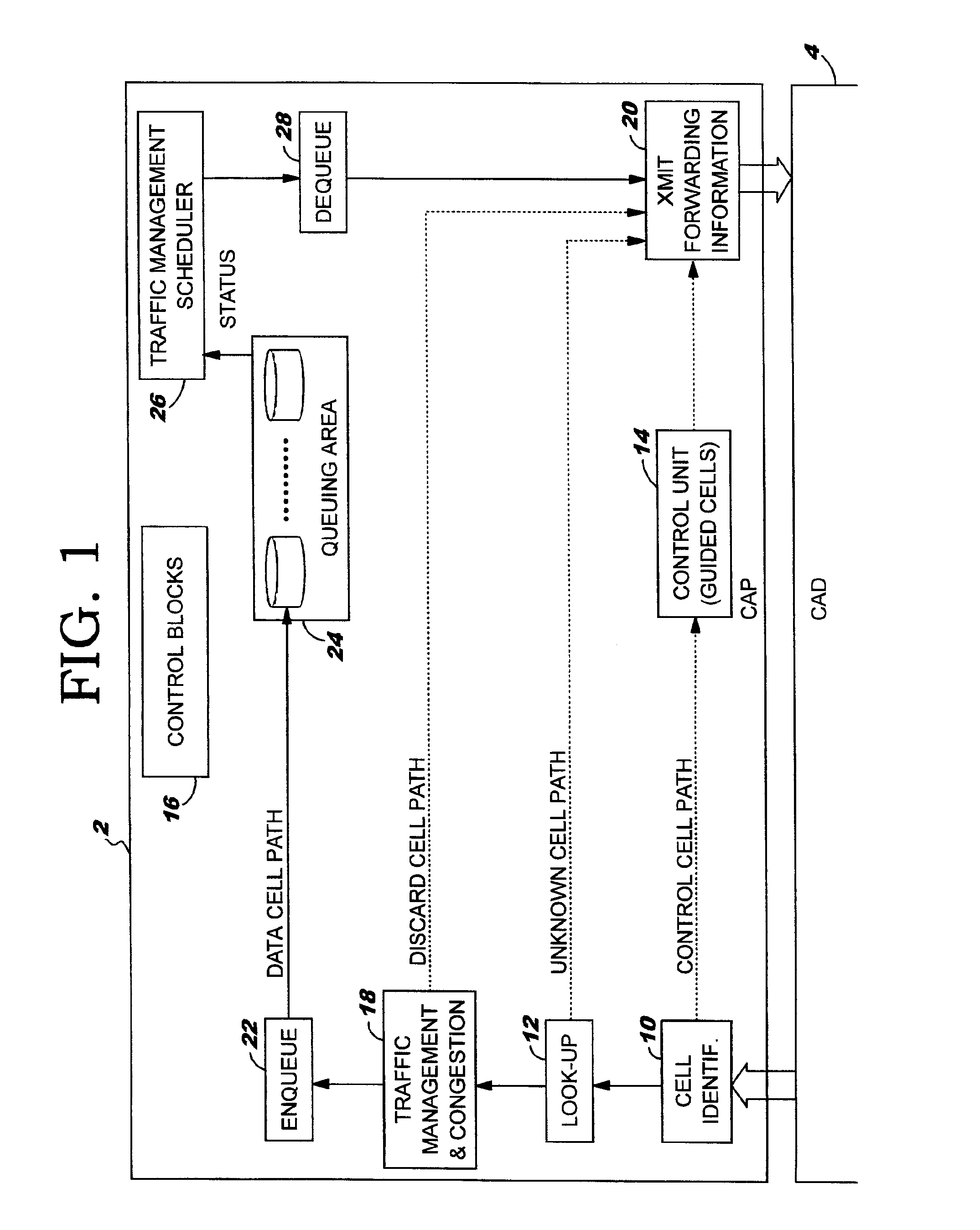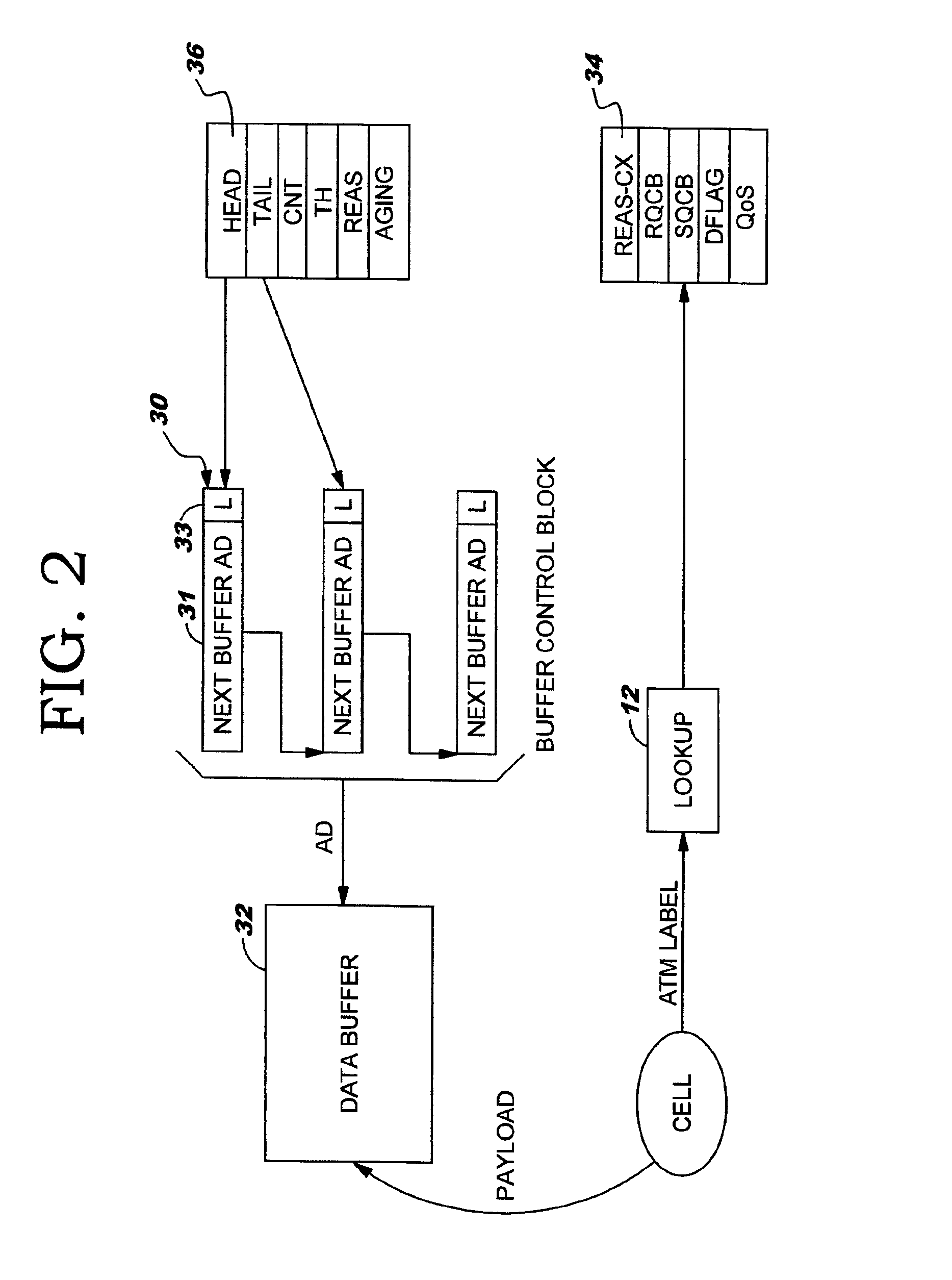Enqueuing apparatus for asynchronous transfer mode (ATM) virtual circuit merging
a technology of asynchronous transfer mode and aqueuing apparatus, which is applied in the direction of data switching network, frequency-division multiplex, instruments, etc., can solve the problems of inability to scale up to large networks, inability to achieve vp merging, and considerable reduction of entries
- Summary
- Abstract
- Description
- Claims
- Application Information
AI Technical Summary
Benefits of technology
Problems solved by technology
Method used
Image
Examples
Embodiment Construction
With reference now to the figures, and in particular with reference to FIG. 1 there is depicted a block diagram illustrating a protocol engine of an output adapter in an ATM switching node in which the enqueueing system of the present invention is implemented. Specifically, the description in reference to FIG. 1 relates to the structure of a Common ATM Processor (CAP) 2 in an output adapter that includes the enqueueing system of the present invention. Upon receipt of a cell from a Common ATM Data Mover (CAD) 4, a cell identification unit 10, here an ATM label decoder, determines whether the cell is an ATM user cell or a control cell from a Control Point. If cell identification unit 10 determines the cell is an ATM user cell, it and delivers the cell to a lookup unit 12. Otherwise cell identification unit 10 forwards the cell to a control unit 14.
Lookup unit 12 resolves the ATM label (VP-VC) of the incoming cell to identify its connection using a set of control blocks 16 that are set...
PUM
 Login to View More
Login to View More Abstract
Description
Claims
Application Information
 Login to View More
Login to View More - R&D
- Intellectual Property
- Life Sciences
- Materials
- Tech Scout
- Unparalleled Data Quality
- Higher Quality Content
- 60% Fewer Hallucinations
Browse by: Latest US Patents, China's latest patents, Technical Efficacy Thesaurus, Application Domain, Technology Topic, Popular Technical Reports.
© 2025 PatSnap. All rights reserved.Legal|Privacy policy|Modern Slavery Act Transparency Statement|Sitemap|About US| Contact US: help@patsnap.com



